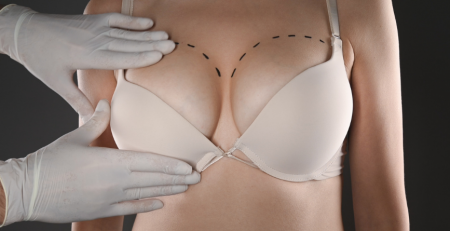Behind the Curtain: Unveiling the Risks and Complications of Breast Augmentation Surgery
Choosing to undergo breast augmentation is a significant decision, driven by the desire for breast enhancement and confidence. While the procedure has transformed countless lives, it’s crucial to approach it with a comprehensive understanding of potential risks and complications.
In this blog, we will unveil and explore the various aspects of risks associated with breast augmentation surgery and how we can minimise them. This information is to empower you rather than scare you, as a complete understanding facilitates an informed decision-making process.
10 Breast Augmentation Risks & Complications
1. Infection:
The risk of infection is inherent in any surgical procedure. Despite meticulous hygiene standards, infections can occur. Vigilant postoperative care, including following prescribed hygiene routines and promptly reporting any signs of infection to the surgeon, helps mitigate this risk.
2. Capsular Contracture:
Capsular contracture is a potential complication where the scar tissue (capsule) that naturally forms around the implant contracts, causing firmness and distortion. While its exact cause remains unclear, regular massage, proper implant placement, and choosing quality implants can minimise this risk.
3. Implant Rupture or Leakage
Implant rupture or leakage, though rare, is a concern. This may result from trauma, age-related wear, or manufacturing defects. Regular monitoring through imaging and opting for high-quality implants can reduce the likelihood of rupture.
4. Changes in Nipple and Breast Sensation
Temporary or permanent changes in nipple and breast sensation can occur post-surgery. Nerves may be affected during the procedure, leading to altered sensitivity. While sensation often returns, it’s essential to discuss potential changes with the surgeon beforehand.
5. Allergic Reactions to Implants:
Allergic reactions to implant materials are extremely rare but possible. To minimise this risk, patients with known allergies are carefully evaluated before they proceed to surgery.
6. Hematoma and Seroma:
Hematoma (blood accumulation) or seroma (fluid accumulation) can occur after surgery. While rare, they may necessitate drainage. Following postoperative guidelines and promptly reporting unusual swelling or discomfort aids in early detection and management.
7. Anaesthesia Risks:
Anaesthesia carries inherent risks, including allergic reactions and adverse effects. Pre-surgery health assessments and transparent communication with the anaesthesia team are crucial to minimise these risks.
8. Implant Malposition or Displacement:
Implant malposition or displacement, causing asymmetry, is often corrected through revision surgery. Techniques like capsulorrhaphy (tightening the implant pocket), repositioning the implants, or adjusting tissue support to restore proper alignment tailored to the patient’s needs. Regular follow-ups ensure ongoing monitoring and timely intervention if required.
9. Delayed Wound Healing:
Factors such as smoking, certain medications, or pre-existing health conditions can contribute to delayed wound healing. Abiding by preoperative guidelines and adopting a healthy lifestyle aids in minimising this risk.
10. Unsatisfactory Aesthetic Outcome:
Despite meticulous planning, individual healing responses can impact the aesthetic outcome. While this is not a medical complication, it still adds pressure in the patient’s healing journey. Surgeons reassess results, consider revision surgery, provide education, and offer emotional support. Preventive measures include thorough preoperative discussions, building trust, and continuous improvement in surgical techniques.
While breast augmentation has transformed countless lives by enhancing confidence and aesthetics, it’s essential to acknowledge and understand the associated risks and complications.
Choosing a skilled and board-certified plastic surgeon is paramount in minimising risks. Dr. Priya Bansal, a board-certified female plastic surgeon in Delhi, possesses the expertise and dedication to guide individuals through the breast augmentation journey, ensuring both safety and satisfaction. Prospective patients must have thorough discussions with their chosen surgeon, seeking clarity on potential risks and strategies for risk mitigation.
Ultimately, an empowered and informed approach, coupled with a collaborative patient-surgeon relationship, sets the foundation for a positive breast augmentation experience.















